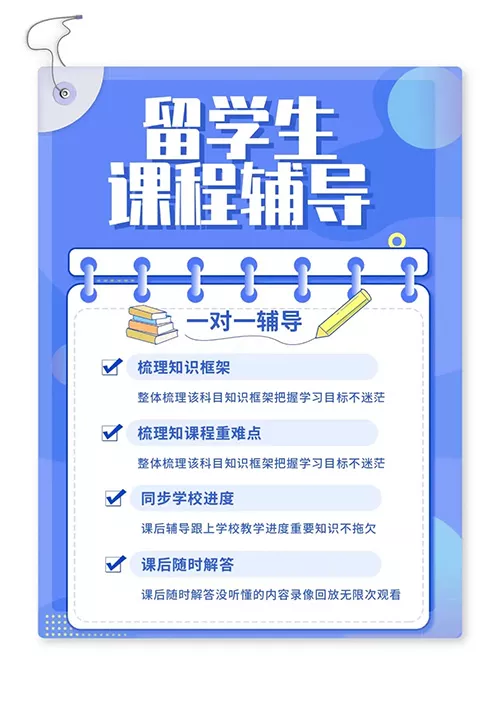什么是research proposal?
research proposal即开题报告,告诉你的导师你的研究主题和研究方向。要注意的是“How will you solve the problem” 这是整个proposal中最关键的地方。它虽然不算分,但是毕竟事关毕论的成绩,所以大家一定要慎重对待。
research proposal一般多少个字?
在500-1000之间
一定要cover的内容:
研究主题、写作目的、相关背景信息、准备采用的研究方法、产生的贡献与影响、局限性等。
-下面就来详细的介绍一下proposal每一部分应该怎么写:
1、Titile:清晰简洁的描述你研究的重点是什么
2、Abstract:研究的问题+研究的基本原理+研究假设+研究方法(如何设计?准备怎么进行研究?怎么进行数据收集?)+主要结论(大概200-300字+-)
由于字数限制,下期接着分享,需要proposal example或模版的可以评论区
3、Introduction:研究目的+研究背景+研究的基本原理+简要描述研究解决的主要问题和次要问题+陈述你的假设或理论+提供关键概念定义(可写可不写)
4、Literature Review:展示你对研究问题相关的理论和研究问题的理解(前人对于研究问题做了哪些研究?取得了什么样的结果?是如何进行的?局限性有哪些?说明你的研究在哪些方面弥补了这些不足?)
批判性的评估相关文献,为研究提供新的理论见解或开发一个新的模型作为概念框架。
让你的读者相信你提出的研究将对文献做出重要和实质性的贡献(例如,解决一个重要的理论问题或填补文献中的一个主要空白)。
5、Methods:
说明研究采用的方法是什么?提供你的计划安排并描述完成项目所需的内容。
→是问卷调查研究还是做实验?你选择什么样的设计?
→你使用什么样的测量工具或问卷? 什么选择它们? 它们有效可靠吗?
→你计划如何进行你的研究?涉及哪些活动?需要多长时间?
6、Results:
虽然你在Proposal阶段没有结果,但是,你需要知道你将要收集什么样的数据?使用什么样的计算方法来回答研究的问题或实验假设
7、conclusion:
辩证的总结+对于研究计划中提出的看法
最后给大家准备了一些proposal example,需要的同学可以

1.0 Introduction and Background
1.1 Introduction
Performance-related pay (PRP) is a reward strategy where by some proportion of an employee'sremuneration package is linked to individual, group or organisational performance (Lawson, 2000). Insome instances of PRP,individual performance is used to determine an employee's salary within apay range. PRP is assumed to increase employee performance by improving motivation, subsequentlyincreasing organisational performance (OECD, 1993). In 2011, 22% f public sector organisationsused some form of financial incentive scheme (WERS,2013, p.25).
Following recommendations from a report by the School Teachers’ Review Body (STRB), payreformations were introduced for teachers in England and Wales. As from 1st September 2013.teachers’pay is now being more closely linked to performance; the expectation is that PRP willmotivate improvements in teacher performance (STRB,2012). Worryingly, PRP schemes havereceived fierce criticism from academics (Deming, 1986, p. 75: Pfeffer,1998) and much of theresearch examining the impact on performance in the public sector has been, at best, inconclusive(Marsden & French,1998; Marsden & Richardson,1994).
Improving the effectiveness of teachers would have a major impact on the performance of thecountry's schools’(The Sutton Trust, 2011, p. 5). Quality of teaching is one of the biggest influenceson student outcomes (OECD, 2005; Rivkin et al, 2005). However, identifying a causal relationshipbetween teacher PRP and student outcomes is problematic. Ouality of teaching is just one of manyfactors that determine student attainment, meaning that a longitudinal study with strict control ofpotentially confounding variables would be required. Instead, this research intends to examine therelationship between PRP and the more proximal variables of teacher motivation and performanceThe benefit of this approach is that PRP and teacher performance are much closer related and a moreconfident conclusion can be drawn, If PRP is unable to improve teacher performance, then it cannotexpect to improve student performance. Therefore, the new PRP reformations for teachers in Englandand Wales will be examined with regards to the caveats of the theory: are teachers motivated bfinancial incentives; is the performance of teachers measurable. If these stipulations are not met, thenPRP can be expected to have little positive impact on student outcomes. Financial motivation andperformance measurement have been chosen because they are not only two of the most contentiousaspects of PRP, but also teacher pay.
2.0 Literature Review
2.1 Linking Employee and Organisational PerformanceLinking HR practices to organisational performance has been the focus of many academics and HRpractitioners since the seminal work of Huselid (1995). Unfortunately, identifying a causalrelationship is problematic because organisational performance is determined by a multitude offactors. With regards to student performance, school resources and quality of parenting are just twoexamples cited (Coleman et al, 1966). Relating HR practices to employee performance offers morepromise because the two are more proximal. The assumption being that improved employeeperformance will subsequently lead to improved organisational performance (Paauwe, 2009)Previous research measuring the impact of PRP for teachers (HR practice) on student attainment(organisational performance) will be critically reviewed, thus providing the justification for measuringthe link between PRP and teacher performance as illustrated in the research obiectives.
One of the most common forms of predicating unrloyee performance is AMO theory (Paauwe &Boselie, 2005). That is, their (A) ability to perform, (M) motivation to perform and (O) opportunity toperform (Patterson et al, 1997, p.13). By satisfying each of these routes, employee performance ispredicted to increase. Teacher motivation has been chosen as the focus of this research because PRprelates most powerfully, although not exclusively, to motivation; e.g. the capacity of PRP to attractand retain the best teachers thus improving teachers’ability to perform. Additionally, a number ofother caveats of PRP theory exist besides the motivational value of money and whether performancecan be measured but, again, these were deemed the most relevant considerations with regards toteacher performance. Existing literature surrounding teachermotivation and performancemeasurement will be reviewed.
2.2 PRP for Teachers and Student Performance: Methodological issues
In order to prove a causal relationship between HR practices and organisational performance anumber of research design conditions must be met. Firstly, there must be longitudinal analysis - astatistical association at a particular point in time does not constitute a direct relationship (Guest1997). An excellent example of this methodology comes from Cappelli and Neumark (2001), whichinvolved panel data over nineteen years.
Abstract
Since 1st September 2013, the pay for school teachers in England and Wales is now more closelylinked to their individual performance. Despite a plethora of research measuring the impact of teacherPRP on student performance, the impact of PRP on teacher performance is largely neglected. Thisresearch aims to fill this gap. By exploring competing theories and drivers of motivation within theteaching profession, an attempt has been made to identify the extent that teachers are being motivatedby the financial incentives of the new PRP reward reformations.
Following qualitative analysis of a series of interviews in two case study schools, no evidence wasfound that teachers are being motivated to improve their performance as a result of the new financialincentives. This finding casts doubt over the use of motivational incentives as a tool for drivingteacher performance
Whilst PRP has had a limited mpact on teacher motivation, it has led to an improvement in theperformance management systems at the case schoois. By considering alternative drivers of employeeperformance, it was concluded that there have been improvements in teachers’ performanceattributable to PRP through improved goal-setting. As such, maximising the utility of a school'sperformance management process is suggested as a strategy for deriving the maximum benefit frommandatory PRP reformations. Limitations and recommendations for future research are discussed
Following this research the hope is that more resources will be expended to furthering theunderstanding of teacher performance. As efforts to improve teacher motivation appear unfruitfulpolicy makers must consider alternative routes of driving teacher performance. The implication is thatonly by fully appreciaing PRP as a holistic model within the concept of teacher performance canpolicy makers realistically expect PRP to improve student attainment.
Keywords: performance-related pay; teacher pay; teacher motivation; teacher assessment; goalsetting

